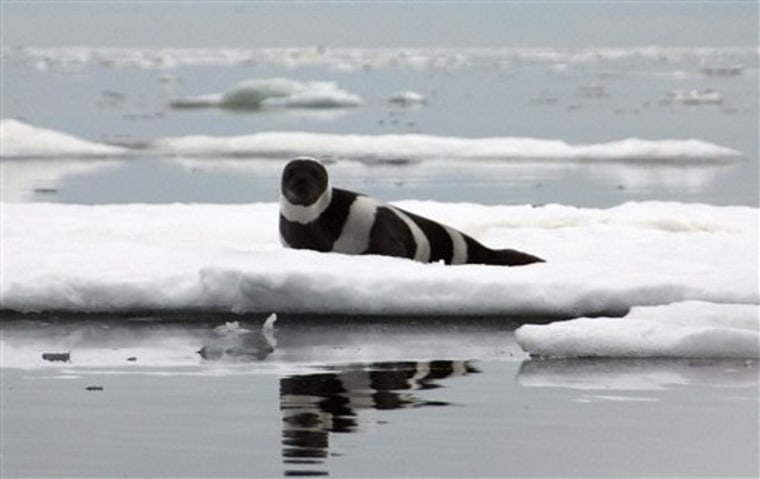Ribbon seals do not currently face extinction and don't need to be added to the endangered species list, the government said Tuesday.
Because of the melting of sea ice due to global warming, the National Oceanic and Atmospheric Administration was petitioned in 2007 to list ribbon seals as endangered.
The main habitat for the seals is sea ice in the Bering Sea, Sea of Okhotsk, Sea of Japan, Chukchi Sea and Beaufort Sea, in the northern Pacific and Arctic.
"Our scientists have reviewed climate models that project that annual ice, which is critical for ribbon seal reproduction, molting and resting, will continue to form each winter in the Bering Sea and the Sea of Okhotsk where the majority of ribbon seals are located," Jim Balsiger, NOAA's acting assistant administrator for fisheries, said in a statement.
The agency said it is difficult to determine the exact number ribbon seals. It did estimate, however, that there are at least 200,000 in the Bering Sea and the Sea of Okhotsk.
The Center for Biological Diversity, which had petitioned for the listing, criticized NOAA. "The ribbon seal, like the polar bear, is being jeopardized by global warming,” said center biologist Shaye Wolf. "Today’s decision is an affront to good science and pushes the ribbon seal a step closer to extinction."
The United States bans commercial hunting for ribbon seals. Alaska natives take a small number — fewer than 200 — each year for subsistence. Russia allows a harvest of ribbon seals, but there is currently no organized harvest industry and the number of seals taken is likely to be very low, the agency said.
